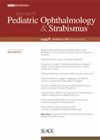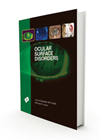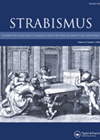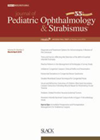You searched for "Wales"
Impact of preop occlusion on surgical outcome
The purpose of this study was to evaluate the effect of improved control with part-time occlusion treatment on the final postoperative surgical outcome in patients with intermittent exotropia. Eighty-nine patients were recruited who had unilateral lateral rectus recess / reset...Ocular Surface Disorders
This publication provides an excellent overview of ocular surface disease (OSD). Dry eye disease (DED) is the commonest OSD. There has been a recent explosion, both in terms of its diagnosis and the treatments that are available. A textbook that...Preventing refractive surprises by real time biometry during cataract surgery
1 October 2015
| Jan Huelle
|
EYE - Cataract, EYE - Cornea, EYE - General, EYE - Glaucoma, EYE - Imaging, EYE - Neuro-ophthalmology, EYE - Oculoplastic, EYE - Oncology, EYE - Orbit, EYE - Paediatrics, EYE - Pathology, EYE - Refractive, EYE - Strabismus, EYE - Vitreo-Retinal
A few months ago a retired lady presented for second eye cataract surgery. I noted on the pre-op ward round that the outcome of her first eye’s surgery looked like a refractive surprise as her spherical equivalent in that eye...
Specialty-driven EMR for paperless clinical environment – insights for an informed choice
1 August 2016
| Rod McNeil
|
EYE - General
Deployment of specialty-driven (or specialty-specific) electronic medical record (EMR) systems across UK ophthalmology units appears to be growing rapidly at the expense of generic, multiuse digital technology packages. Experience further suggests that open source systems can play a significant role...
Don’t ignore the black lesion! It might be mucormycosis
1 June 2017
| Tina Parmar
|
EYE - Cornea
Keeping mucormycosis infection in the foreground of your differential diagnosis, especially in those more vulnerable patients, will help save their lives if recognised and managed appropriately. Mucormycosis is a fulminant infection caused by the fungi of the family Mucoraceae. It...
RNIB and Abertay University hold event to reboot gaming to make it more accessible for those with sight loss
3 October 2022
Sight loss charity Royal National Institute of Blind People (RNIB) and Abertay University in Dundee will host a pioneering Accessible Gaming Symposium this week.
UKEGS (UK and Éire Glaucoma Society) Conference 2024
9 October 2024
-10 October 2024
Pretty soon it’s going to be the 9th of October, and a quick Wikipedia search will tell you of how this day in history has seen the founding of the Kingdom of Valencia, the initial whispers of the Prague Astronomical...
Celebrating volunteer ophthalmic nurses on #InternationalNursesDay
12 May 2022
Eye News and eye care charity Orbis celebrate volunteer ophthalmic nurses who worked on the frontlines during the pandemic.







